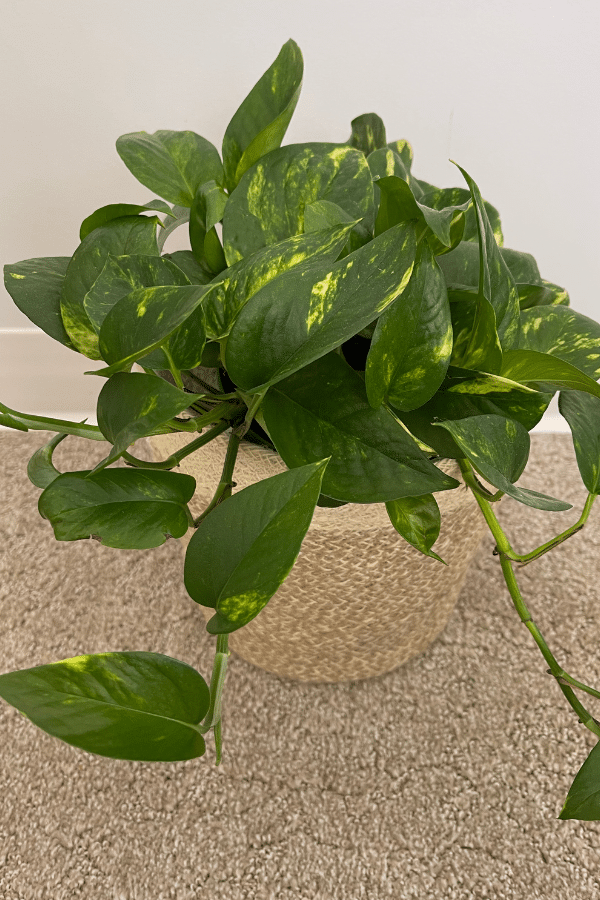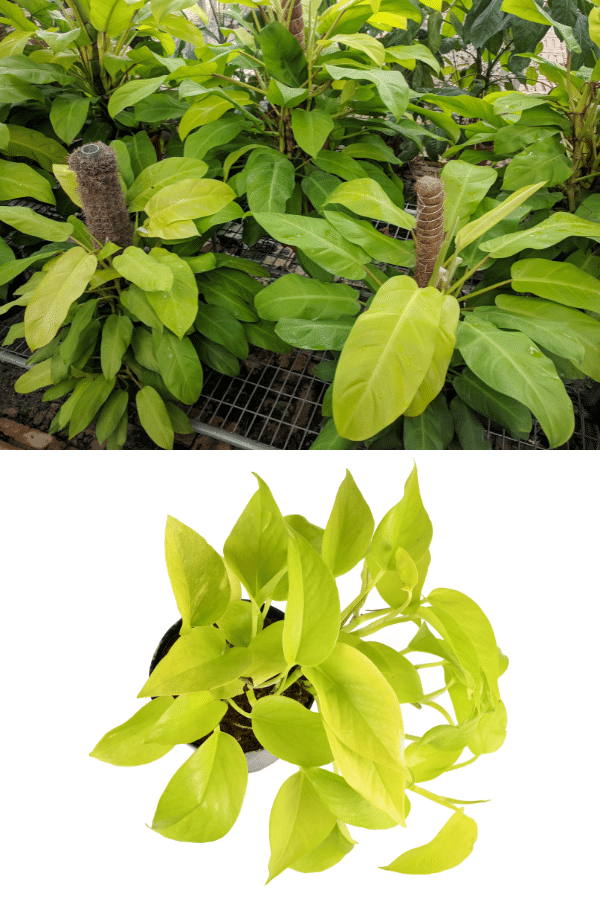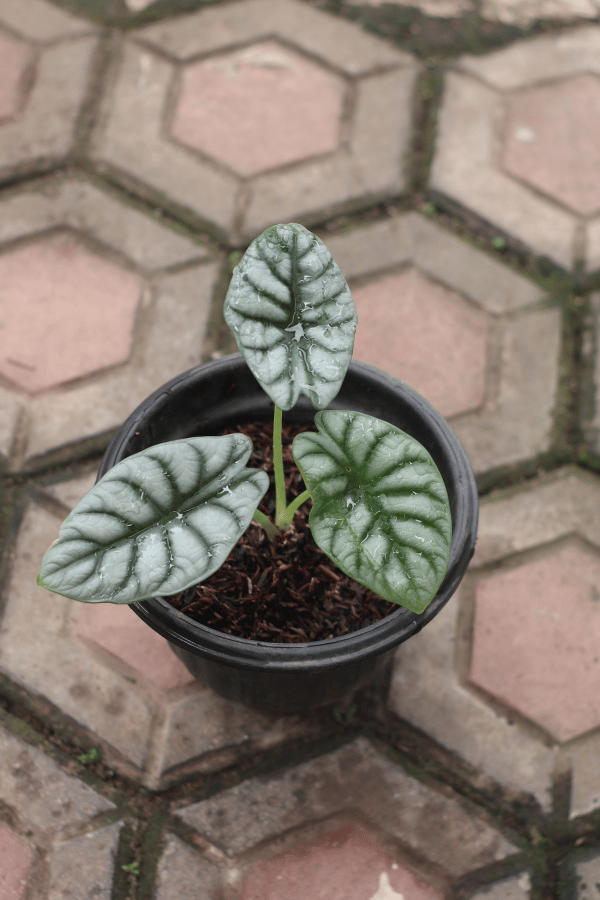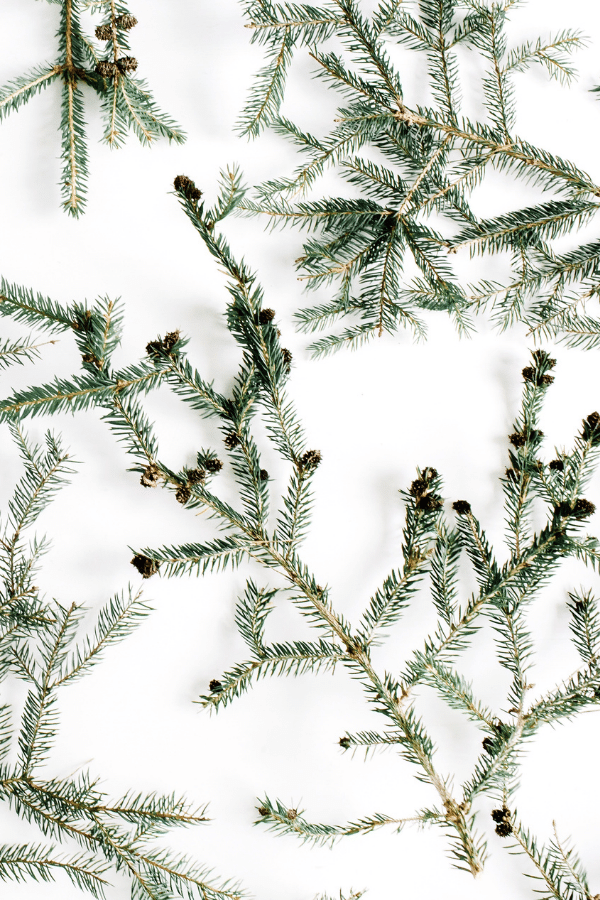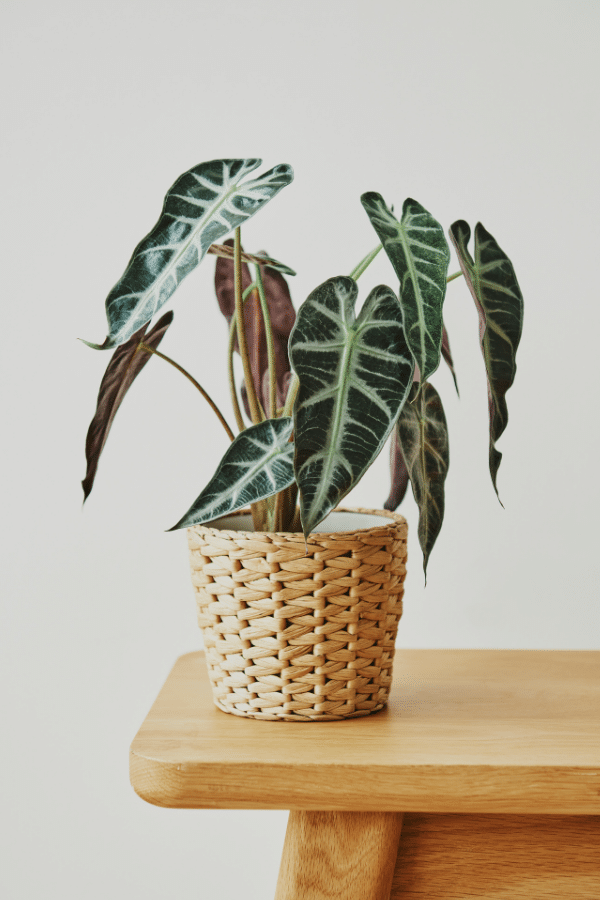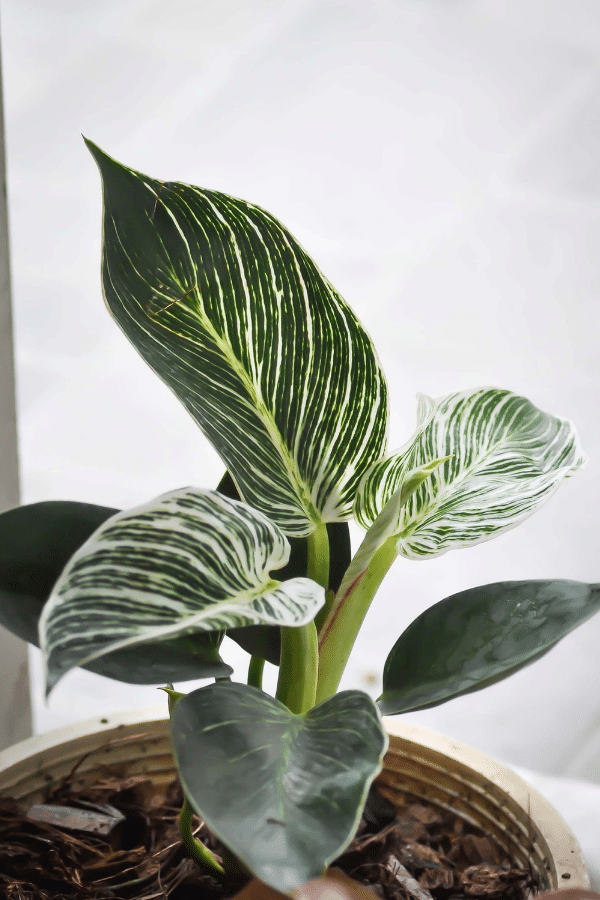Marble Queen Pothos
Scientific Name: Epipremnum Aureum ‘Marble Queen’
Common Name(s): Marble Queen Pothos, Money Plant
Proper Marble Queen Pothos care is imperative to grow a thriving houseplant. In this article, you will find everything you need to know about caring for a Marble Queen Pothos indoor plant ranging from history to temperatures to propagating and toxicity.
Like other Pothos plants, the Marble Queen Pothos is a low-maintenance houseplant. Be sure to follow the specific Pothos care guide tips this plant needs below.
Quick Care Overview
| Common Name | Marble Queen Pothos, Money Plant |
| Scientific Name | Epipremnum Aureum ‘Marble Queen’ |
| Origin | Southeast Asia, Australia, French Polynesia |
| Identification | Creamy white and green variegated foliage vine |
| Height | 2 to 20 feet tall |
| Soil | Aerated, fast-draining soil |
| Water | Leave on the drier side but keep it humid |
| Temperature | 65-90F |
| Sunlight | Bright, indirect light |
| Toxic to Cats & Dogs | Yes |
| Toxic to Humans | Yes |
| Pests | Mealybugs |
| Diseases | Root rot |
Below we will dive deeper into how to care for Marble Queen Pothos.
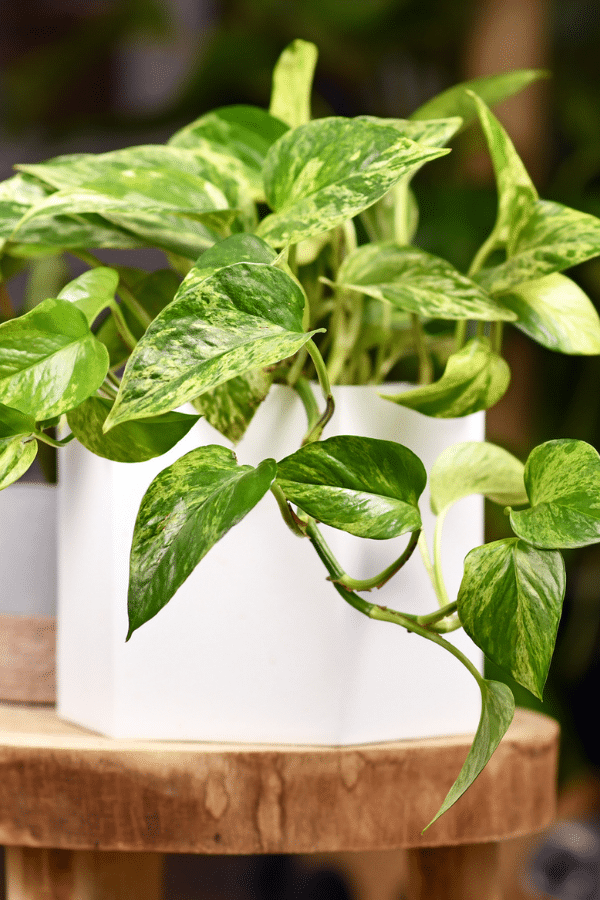
Marble Queen Pothos History
The Marble Queen Pothos is native to Southeast Asia, Australia, and French Polynesia.
Marble Queen Pothos Identification
You can identify the Marble Queen Pothos by the creamy white and green variegated pattern on the leaves. Since it is a pothos, it loves to trail and/or climb. You can usually find the Marble Queen Pothos climbing up a moss pole and up a wall, in a hanging basket or on a shelf to let its variegated leaves trail
Marble Queen Pothos Growth Facts
The leaf size is typically comparable to the size of a Golden Pothos, but it is far more challenging to grow than the classic Golden Pothos. The growth rate for this variation of pothos is pretty slow, around 12-16 inches per year.
How Big Does a Marble Queen Pothos Get?
The Marble Queen Pothos vine can grow between 2-5 feet long when planted as a houseplant indoors and up to 20 feet tall when crawling up a wall in nature.
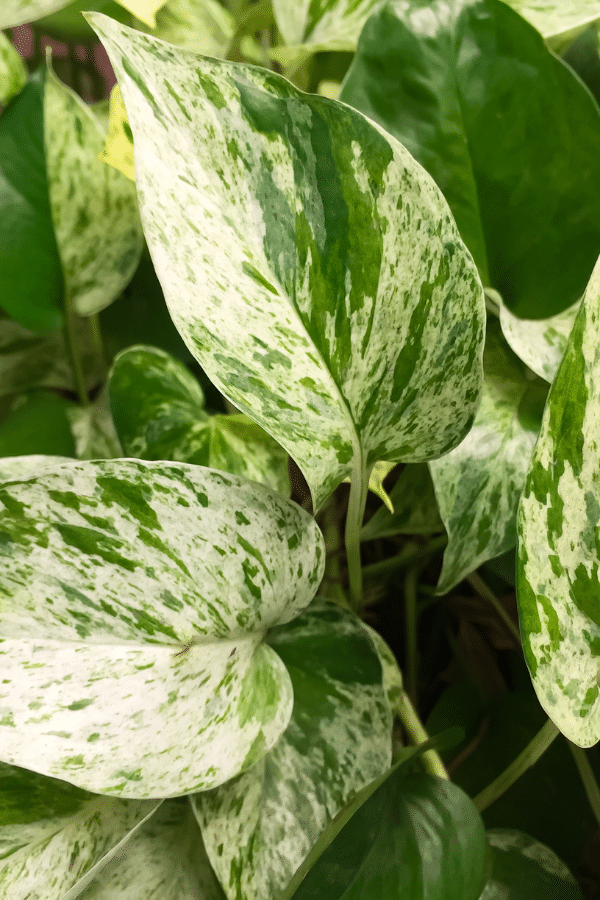
Marble Queen Pothos Care
Marble Queen Pothos care is a bit more tedious when compared to other variations of the pothos, as it requires more maintenance and can be a bit harder to grow than others. It requires well-aerated and fast-draining soil. Although the Marble Queen Pothos isn’t too picky when it comes to fertilizer, you’ll want to provide it with a well-balanced organic fertilizer once a month from spring to fall.
The most demanding part of caring for a Marble Queen Pothos is watering. You’ll need to keep the soil more on the dry side. It can survive in many different light conditions from low light to bright light but it definitely needs indirect lighting. As it is a tropical plant, it will grow significantly faster in medium to brightly lit environments with warm temperatures of 65–90F.
Best Soil for Marble Queen Pothos
The Marble Queen Pothos will do well with any well-aerated fast-draining soil. If your soil is not draining quickly enough, add a little sand or perlite to the mixture to improve the drainage quality.
Marble Queen Pothos Fertilizer
The best fertilizer for Marble Queen Pothos is an organic well-balanced plant liquid fertilizer. All you’ll need to do is feed your plant once a month during the spring and through fall. Watch out for yellowing leaves and brown leaf tips as this can be a sign of pothos over-fertilization.
Marble Queen Pothos Watering
Watering your Marble Queen Pothos is by far the most tedious aspect of caring for marble queen pothos. Watering is tedious because unlike other variations of the pothos, the Marble Queen Pothos prefers dry soil. But of course, it can’t go too long without water. When watering, allow your soil to dry out almost halfway through before watering again. When your plant is ready to be watered again, saturate the soil completely until water comes through the drainage hole.
This method of watering will keep your Marble Queen Pothos happy and boost your plant’s overall growth. However, if you notice the edges of the leaves turning brown and becoming dry and brittle, you may be underwatering. Alternatively, if the leaves turn yellow and the soil is soggy, this can be a sign of overwatering. So pay close attention to the Marble Queen Pothos watering frequency and give it water only when it needs it.
Marble Queen Pothos Light Requirements
The Marble Queen Pothos can survive plenty of different lighting environments. However, like all plants, it thrives in a specific light environment. Since the Marble Queen Pothos is a tropical plant, it will grow best in medium to bright indirect light. The brighter the indirect sunlight, the better the plant growth. Don’t place this plant in direct sunlight as you will burn the leaves.
Marble Queen Pothos Temperature & Humidity
You’ll find that the Marble Queen Pothos thrives best in temperatures ranging from 65 – 90F. This plant can handle the winter months when provided with typical household temperatures in the winter, be sure to place away from drafty windows and air vents. The marble queen pothos also prefers humidity levels between 40-60%.
Repotting Marble Queen Pothos
Your Marble Queen Pothos requires repotting once a year for small plants and 2-3 years for larger plants. Always repot in early spring or summer. But if you notice your plant is suffering from root rot or the roots are coming out of the container’s drainage hole, you may repot it right away.
Marble Queen Pothos Maintenance & Pruning
The Marble Queen Pothos does well with regular pruning to prevent vines from getting leggy. To correctly prune, trim any discolored leaves and stems with sharp, clean garden scissors. If you need to trim a lot of your plant, remember the rule of only pruning back no more than 25% of the entire plant at one point in time.
Marble Queen POTHOS RElated Articles:
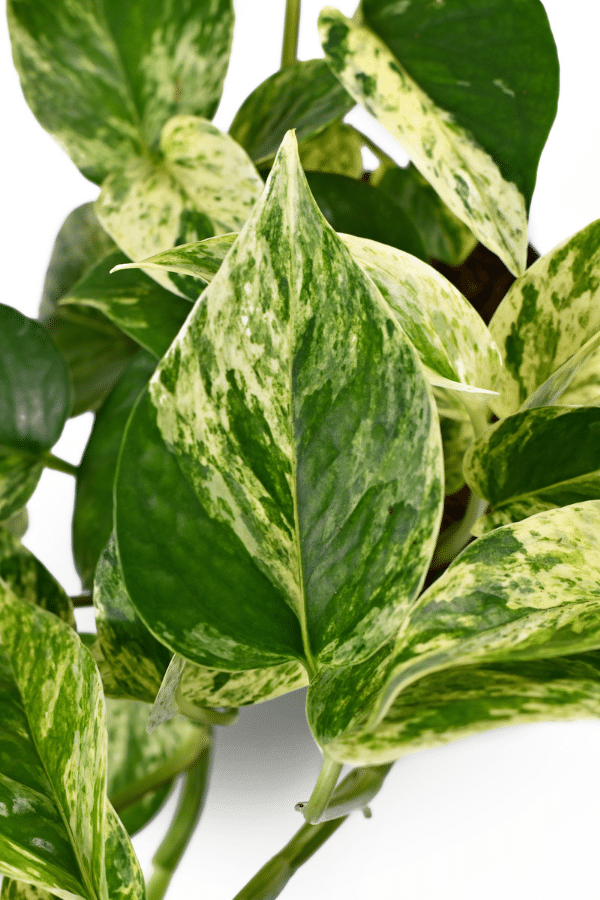
Marble Queen Pothos Propagation
There are many different ways to propagate Marble Queen Pothos. From stem cuttings, in a jar filled with water, and the layering technique are the most common.
Marble Queen Pothos Toxicity
Like the rest of Pothos variations, the Marble Pothos also contain harmful crystals, such as insoluble calcium oxalate and crystals making Marble Queen Pothos toxic to both humans and pets if ingested. Ideally, the Marble Queen Pothos should remain out of reach of pets and small children alike.
Toxicity to Humans
If consumed, the calcium oxalate crystals will cause irritation and swelling of the mouth, lips, and throat. Keep this plant away from children and wash hands after you come into contact with this plant.
Toxicity to Cats & Dogs
If ingested by cats or dogs, this plant will cause irritation to the mouth, throat, and stomach and will cause vomiting and diarrhea. Keep the Marble Queen Pothos away from pets.
Marble Queen Pothos Problems
Marble Queen Pothos Leaves Turning Yellow
When the Marble Queen Pothos gets yellow leaves, the most common problem is root rot, excess sunlight, or just overall improper care. Follow the care instructions above to ensure the best life for your Marble Queen Pothos.
Marble Queen Pothos Leaves Turning Brown
The most common issue for browning leaves on a Marble Queen Pothos is overwatering and not having enough humidity. Be sure to follow the proper care instructions on watering to prevent this. Also, place a humidifier near the plant to give it the humidity levels it needs.
Marble Queen Pothos Legginess
If you don’t provide the proper pruning care to your Marble Queen Pothos, it is common for the plant to become leggy, meaning really long stems with few leaves. To prevent legginess and create bushier and fuller foliage, prune once a year just before the growing months start.
Marble Queen Pothos Diseases
Root rot is one of the most common diseases the Marble Queen Pothos runs into. Be sure to use adequate draining soil and to not overwater it.
Marble Queen Pothos Green Leaves
The main attraction of this Pothos variation is the variegated white and green foliage so if you notice your Marble Queen Pothos leaves is starting to turn solid green, something is wrong. If this happens, it is not getting enough sunlight so move it to a brighter spot to get the variegation on the leaves again.
Marble Queen Pothos Pests
Luckily, there aren’t many different pests that affect the Marble Queen Pothos. Aphids, mealybugs, and thrips are the most common pests that invade the marble queen pothos and can spread to other plants quickly, so it is best to take preventative care to ensure they do not ruin your plants. Spray with neem oil or an insecticide for prevention and to get rid of them.

